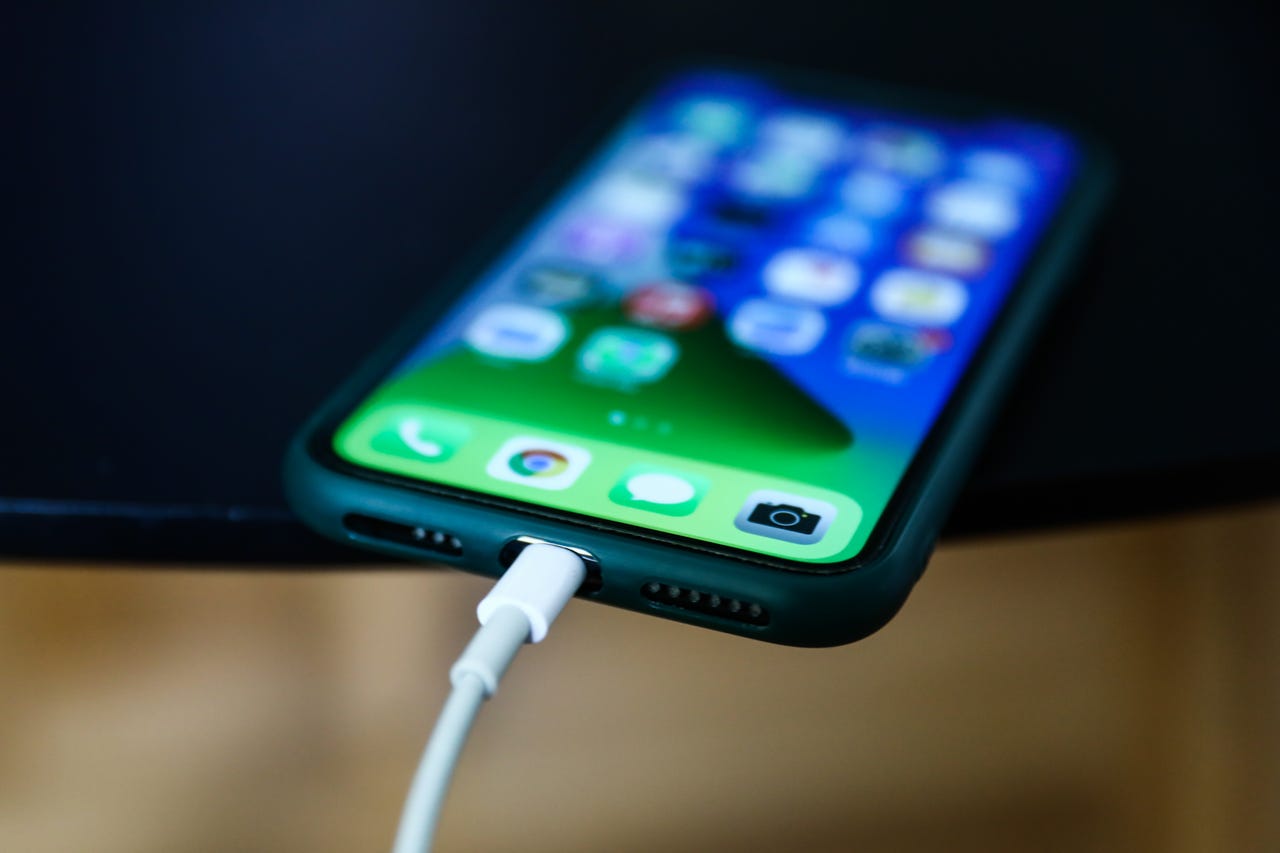
Photo by Jakub Porzycki/NurPhoto via Getty Images
I fear that we in the tech media shoulder some responsibility for making people worry — sometimes to the point of obsession — about their smartphone’s battery life. It amazes me how close of an eye some smartphone owners keep on their devices.
We’re constantly monitoring our phone’s health.
To be fair, I’m like that too. A bit. No, not really. A lot.
Also: The best wireless chargers for iPhones
And if there’s one thing that we battery watchers get good at spotting, it’s when the battery is discharging faster than normal. And there’s no easier thing to notice than a battery going from 100% to 99%.
iPhone battery meter ticking over from 100% to 99%
Adrian Kingsley-Hughes/ZDNET
When the battery was new it may well have remained at 100% for a few hours. But after a few months of wear, that tick-over from 100% to 99% happens a lot quicker.
But why? Is this a problem?
No, it’s nothing more than normal battery wear.
Every charge/discharge cycle that your iPhone goes through wears the battery a little.
According to Apple, the battery in your iPhone is designed to retain up to 80% of its original capacity at 500 complete charge cycles.
Also: Why you should really stop charging your phone overnight
You can see this measure if you tap on Settings > Battery > Battery Health & Charging, and it’s under the heading Maximum Capacity.
Battery Health on IOS 16 showing Maximum Capacity
Adrian Kingsley-Hughes/ZDNET
The more you use your phone, the more it wears the battery. That’s physics. And you can’t change the laws of physics.
The bottom line: As part of the normal battery-wear process, your battery will lose about 1 percentage point off this Maximum Capacity for every 25 cycles.
This, in turn, affects how quickly your iPhone’s battery drops. That is, an old iPhone charged to 100% holds less charge than a new iPhone changed to 100% because of this wear.
Also: The price of replacing your iPhone battery has gone up
But it gets more complicated.
If you watch that Maximum Capacity figure, you’ll notice — when your iPhone is new — that it takes weeks, maybe months, before that 100% maximum capacity rolls over to 99%.
Why is that?
Because the battery inside your iPhone has a higher actual capacity than Apple claims. Apple under-promises on the capacity because new batteries have a natural variation in capacity, and Apple would prefer that your battery has slightly more capacity — not less — than what’s in the spec sheet.
Also: The best MagSafe battery packs for your iPhone
If you’re interested, you can actually get iOS to show you how much capacity your battery had when new, what its current capacity is, what its rated capacity is, and how many charge cycles it’s been through.
Confused? Don’t worry! Put simply, what this means is that when your battery is new, it can hold more power than its rated capacity; and because of this, it looks like it can stay at that 100% mark for longer.
So, is this slow erosion of how long your battery will stay at 100% a problem?
No.
This is what normal battery wear looks like.
Also: The best phones right now
That said, there are a few steps you can take to take the stress off your battery to reduce additional wear.
- Use a good-quality charger – either a genuine Apple charger or a good quality third-party charger.
- Keep your iPhone at room temperature as much as possible – don’t leave it baking in the sun or in a car window all day.
- Don’t keep your iPhone on a charger all the time – the battery is meant to be used.
So, if this is normal, what are the signs of a dying battery?
Here’s what I look out for:
- Rapid discharging over a few hours
- Crashing when under load (for example, when playing a demanding game)
- Phone refusing to charge to 100%
- Physical damage such as bulging or overheating
These are signs that your battery could be worn. But remember, all is not lost! It’s not much of a hassle to get it replaced, giving your iPhone a new lease of life.